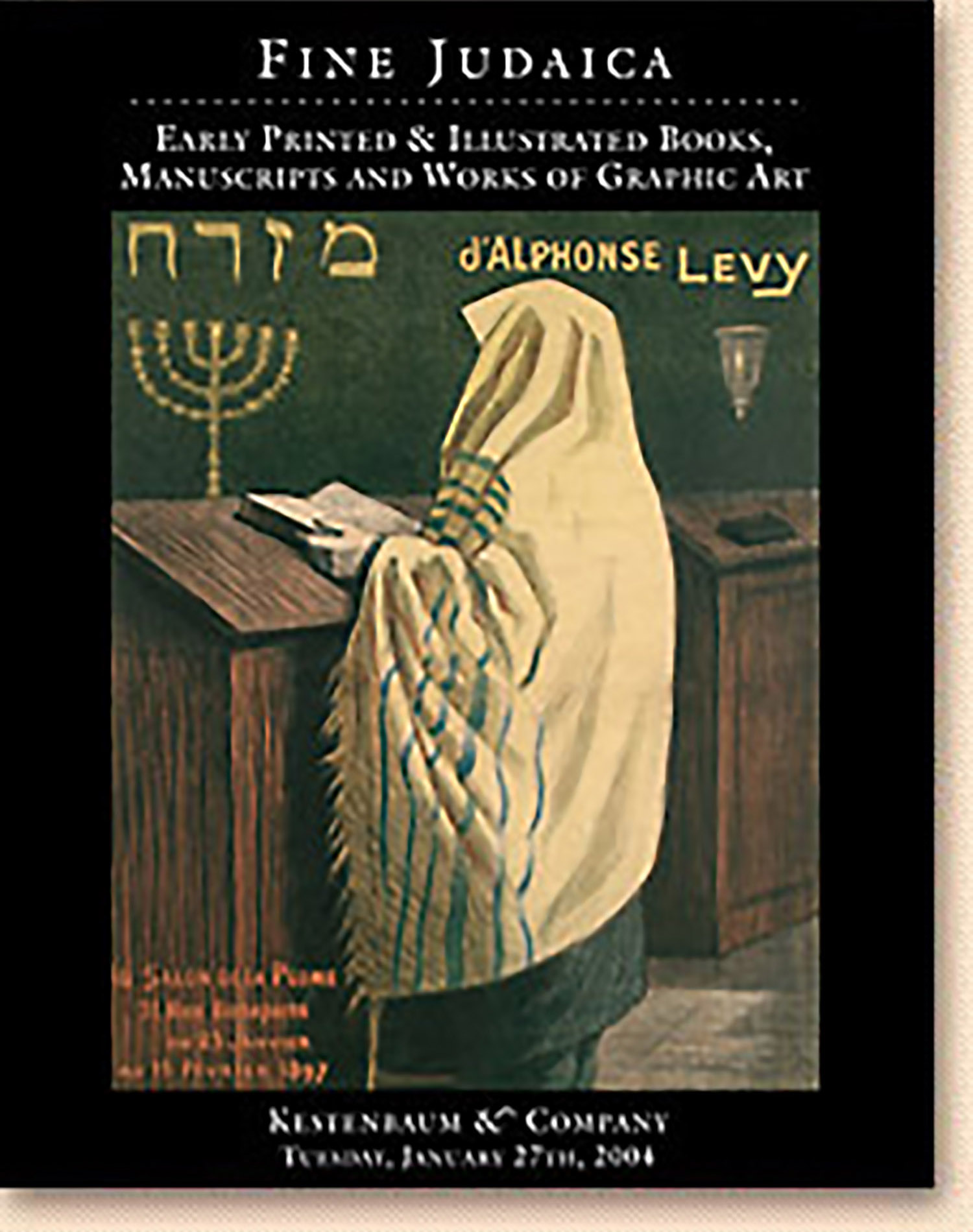Chaim Vital. Shaar Hahakdamoth

AUCTION 22 |
Tuesday, January 27th,
2004 at 1:00
Fine Judaica: Printed Books, Manuscripts and Works of Graphic Art Including Holy Land Maps, Illustrated Books, Photography and Graphic Art from The Collection of Daniel M. Friedenberg of Greenwich, Conn
Lot 227
(KABBALAH).
Chaim Vital. Shaar Hahakdamoth
(Jerusalem: 1857
Est: $5,000 - $7,000
SCRIBE: Yosef b. Yaakov Elmaleh with his stamp depicting the Kothel Ma’aravi explicitly stating Jerusalem.
The dissemination of the Kabbalistic teachings of the Ari Zal follows a complicated and rather convoluted path. His major disciple, R. Chaim Vital revised and edited his master’s teachings a number of times, thus accounting for the various versions of the Etz Chaim. The Shaar Ha- hakdamoth is the first Shaar of the Shmonah Shearim arranged and edited by the author’s son R. Shmuel Vital in accordance with the contents of each “gate.” Many Kabbalists especially among the Sephardim recognized only this recension of the Shemonah Shearim as correct. According to G. Scholem, R. Shalom Sharabi and the Yeshivah Beth El which continued his tradition concentrated on the Shemoneh Shearim. (Kabbalah, Jerusalem ,1974, p.82) The present manuscript contains a number of textual variances and occasionally a fuller and clearer version not noted in the standard edition (published and edited in Jerusalem by R. Yehudah Tzvi Brandwein author of Maalot Ha-sulam)
The layout of this manuscript is also different than the published version - the contents are divided by “shoresh” (root), “geza” (trunk), ”choter” (shoot), and “anaf” (branch) - whereas the published version has standard chapters. Thus, the fiirst paragraph in the manuscript explaining how the branches evolve from the roots and the trunk is not to be found in the published edition. In this manuscript, the Derush Partzuf Rachel logically follows the Derush Paertzuf Leah (f.103) which is in a different order than the publishedversion
